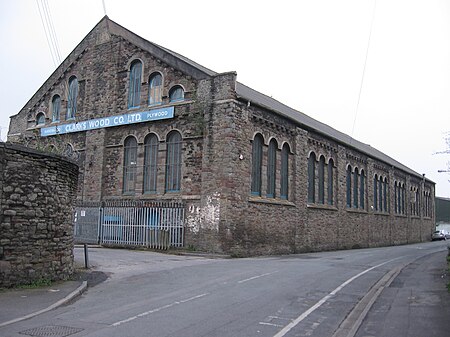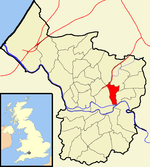Clarks Wood Company warehouse
Brick buildings and structuresBristol building and structure stubsByzantine Revival architecture in the United KingdomGrade II listed buildings in BristolGrade II listed industrial buildings ... and 3 more
Industrial buildings completed in 1863Use British English from February 2023Warehouses in England

The Clarks Wood Company warehouse is a 19th-century industrial building in Silverthorne Lane, Bristol. It dates from about 1863, but only two of its original walls remain. It is known to have been used early in its history as a railhead warehouse for William Butler's tar works at nearby Crew's Hole, and later became part of St Vincent's Works.It is an example of the Bristol Byzantine style of architecture, and has been listed by English Heritage as a grade II listed building.
Excerpt from the Wikipedia article Clarks Wood Company warehouse (License: CC BY-SA 3.0, Authors, Images).Clarks Wood Company warehouse
Silverthorne Lane, Bristol St Philip's
Geographical coordinates (GPS) Address External links Nearby Places Show on map
Geographical coordinates (GPS)
| Latitude | Longitude |
|---|---|
| N 51.4509 ° | E -2.5695 ° |
Address
Clarks Wood Co. Timber Merchants
Silverthorne Lane
BS2 0QJ Bristol, St Philip's
England, United Kingdom
Open on Google Maps









